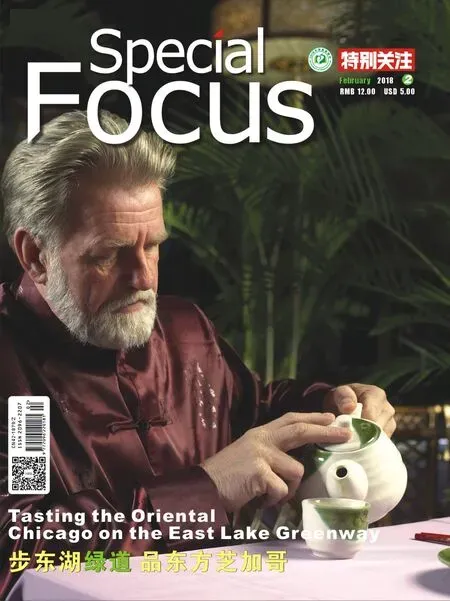On “Méi”
2018-04-02ByHuangLuZouXinsheng
By Huang Lu & Zou Xinsheng
“Language is the Rubicon that divides man from beast,” declared philologist Max Muller. The birth of language is the dawn of civilization and aesthetics, which is witnessed by Chinese characters as beautiful and wonderful as stars over thousands of years.
The Chinese character “梅 ” (méi) is believed to be one of the most brilliant ones in the starlit sky.It combines two parts: the left part is “木 ” (mù),meaning “tree,” representing its semantics; the right part is “每 ” (měi), meaning “each,” representing its pronunciation, as illustrated in Shuowen Jiezi(Origin of Chinese Characters), the first Chinese Dictionary known in history.
When it comes to its connotation in the Chinese mind, a plum blossom 梅 花 (méi huā) will heave into view first. As an indigenous flower of China,the plum blossom is considered one of the “Four Gentlemen” or “Four Noble Ones” in Chinese art, together with the other three plants: orchid,bamboo, and chrysanthemum, whose noble characters are also widely appreciated. In retrospect,poetry, calligraphy, and paintings of the plum blossom are favorite treasures for the Chinese, which affirms the faith that the character “梅 ” bears a truly eloquent testimony to the infinite power of traditional Chinese culture.
It is the philosophy of plum blossom, the epitome of Chinese integrity, that inspires the Chinese people to struggle with adversity, overcome resistance and achieve goals by maintaining uprightness and persistence. The Plum Performance Award“梅 花奖 ”(méi huā jiǎng), the top award in Chinese drama circles, is the pilgrimage for theater professionals since it was initiated in 1983. At the interface of traditional art and culture, the Award represents the integration of civilization and aesthetics, echoing with the essence of the famous proverb “梅 花 香自 苦 寒 来 ” (méi huā xiāng zì kǔ hán ái) literally and figuratively meaning, “the fragrance of plums blossom comes out of bitter cold”—or “no pain, no gain.”
Besides art, the plum blossom is also spotlighted in literature, where a multiplicity of poems have portrayed its connotation. Chairman Mao’s “Ode to the Plum Blossom” in his main literary work, Poetry of Mao Zedong, extoled the spirits of plum blossoms for remaining beautiful, positive, faithful, and striving for success despite hardship. Moreover, the plum blossom has been recognized as an auspicious flower whose five petals signify joy, happiness,longevity, prosperity, and peace since ancient times.
Not only does the character “梅 ” refer to the plum blossom—it also represents the edible tart fruit, i.e.“梅子 ” (méi zi) “plum.” The idiom “望梅止渴 ” (wàng méi zhǐ kě) is the best presentation for that sense;literally and figuratively speaking, “quench one’s thirst by thinking of plums”—or “console oneself with imagination/false hopes.” Another example is the word “梅 雨 ” (méi yǔ), or “rainy season.” The reason why the rainy season is entitled “plum” is that plums become ripe south of the Yangtze River when the rainy season comes.
The sophisticated brilliance of Chinese characters radiates from the profound culture surrounding them. The charisma of Chinese culture and Chinese characters is an eternal story for the global community and shall not perish from the earth. ◆
